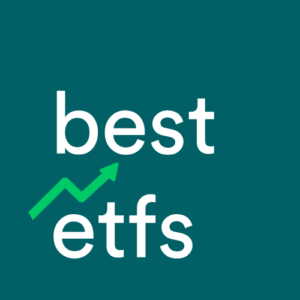On the ASX Commonwealth Bank of Australia (ASX:CBA) shares are amongst the most traded, along with other bank stocks like ANZ Banking Group (ASX:ANZ) and Macquarie Group Ltd (ASX:MQG).
ASX bank shares make up nearly half of the market, measured by the market cap and the All Ordinaries Index.
I’m about to go through the absolute basics of valuing a stock like Commonwealth Bank of Australia. If you’re truly interested in understanding more about how to value a bank share, you should consider watching this tutorial from the analyst team at Rask Australia.
You can subscribe to the Rask Australia YouTube channel and receive the latest (and free) value investing videos by clicking here.
[ls_content_block id=”3301″]
Sector valuations
The PE ratio compares a company’s share price (P) to its yearly profit per share (E). ‘Earnings’ is another word for profit.
There are three easy ways to use the PE ratio. First, you can use ‘intuition’ and say ‘if it’s low, I’ll buy shares’ or ‘if it is above 40x, I’ll sell shares’ (whatever works for you).
Secondly, you can compare the PE ratio of a stock like CBA with MQG or the sector average. Is it higher or lower? Does it deserve to be more expensive or cheaper? Third, you can take the earnings/profits per share of the company you’re valuing and multiply that number by a PE multiple that you believe is appropriate. For example, if a company’s profit per share (E) was $5 and you believe the stock is ‘worth at least 10x its profit’ it would have a valuation, according to you, of $5 x 10 = $50 per share.
Using CBA’s share price today, plus the earnings per share data from its 2019 financial year, I calculate the company’s PE ratio to be 14x. This compares to the banking sector average of 11x.
Reversing the logic here, we can take the profits per share (EPS) ($4.918) and multiply it by the ‘mean average’ valuation for CBA. This results in a ‘sector-adjusted’ share valuation of $56.46.
[ls_content_block id=”3409″ para=”paragraphs”]
DDM modelling
A dividend discount model or DDM is a more robust way of valuing companies in the banking sector.
DDM valuation models are some of the oldest valuation models used on Wall Street and even here in Australia. A DDM model uses the most recent full year dividends (e.g. from 2019/2020) or forecast dividends for next year and then assumes the dividends remain consistent or grow slightly for the forecast period (e.g. 5 years or forever).
To keep it simple, I’ll assume last year’s annual dividend payments are consistent. Warning: last year’s dividends are not always a good input to a DDM because dividends are not guaranteed since things can change quickly inside a business — and in the stockmarket. So far in 2020, the Big Banks have been cutting or deferring their dividends.
In any case, using my DDM we will assume the dividend payment grows at a consistent rate in perpetuity (i.e. forever), for example, at a yearly rate between 1.5% and 3%.
Next, we have to pick a yearly ‘risk’ rate to discount the dividend payments back into today’s dollars. The higher the ‘risk’ rate, the lower the share price valuation.
I’ve used a blended rate for dividend growth, and I’m using a risk rate between 9% and 14%.
My DDM valuation of CBA shares is $49.02. However, using an ‘adjusted’ dividend payment of $4.00 per share, the valuation drops to $45.49. The valuation compares to Commonwealth Bank of Australia’s share price of $69.01.
Valuation + further research
Please, feel free to use these two models as the starting point for your process for analysing and valuing a bank share like CBA. However, remember that these are just tools used by analysts and in reality a good analyst and investor will likely conduct 100+ hours of qualitative research before diving into their spreadsheet and starting their modelling.
For example, I spend a lot of my time looking at bank shares and writing about them, but if I were thinking about investing in a bank today I’d want to get a handle on its growth strategy, economic indicators like unemployment, and then study house prices and consumer sentiment.
[ls_content_block id=”3302″ para=”paragraphs”]



